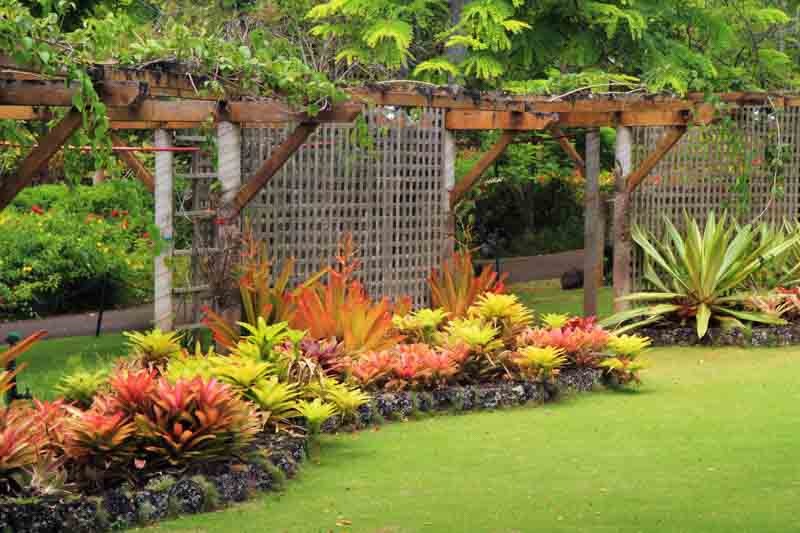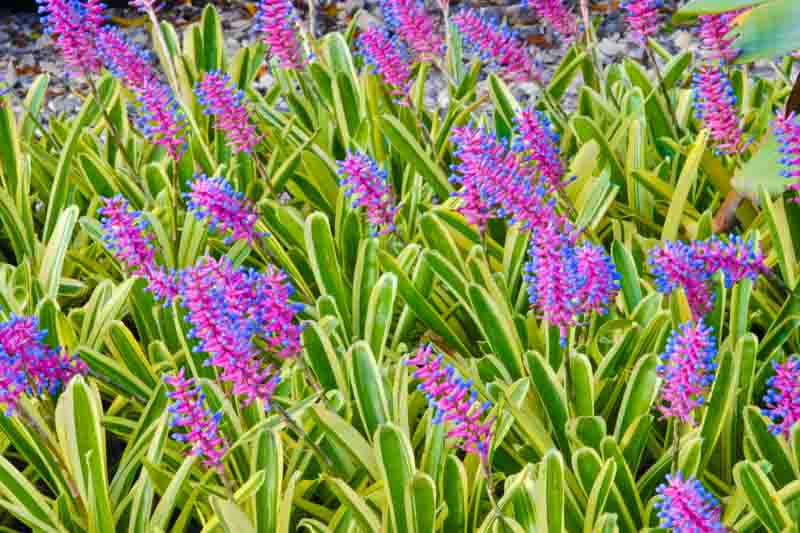Bromeliads are vibrant, easy-to-grow indoor plants that add a touch of the tropics to any home environment.
Bromeliads are a diverse and fascinating group of plants known for their striking appearance, vibrant flowers, and unique growth habits.
Bromeliads are characterized by their rosette pattern of leaves and stunning inflorescences. They have adapted to various environments, from rainforest floors to arid desert climates. Many bromeliads grow on trees or rocks without soil (epiphytic and lithophytic), while others are terrestrial and grow in the ground.
Belonging to the family Bromeliaceae, this group includes around 3,700 known species across approximately 80 genera. Popular genera include Aechmea, Guzmania, Tillandsia (air plants), Vriesea, and Neoregelia, each known for their unique decorative qualities.
Native: Bromeliads are native primarily to the Americas, with a majority found in the tropical regions of Central and South America. Some species are also native to the southeastern United States and West Africa.
Plant Type and Habit: Bromeliads can be both epiphytic and terrestrial. Their growth habit varies widely among species, ranging from tightly clustered rosettes to more spread-out foliage. Many bromeliads collect water in their central “cup,” which is a defining characteristic of the family.
Size: The size of bromeliads can vary significantly, from small air plants just a few inches tall to larger species that can grow up to several feet in both height and spread.
Flowers: Bromeliad flowers can range from bright reds and oranges to deep blues and purples. Blooming seasons vary widely among species, with many blooming in late winter to early spring, although some species can flower at other times of the year.
Fruit: Some bromeliads produce fruit after flowering, with the pineapple (Ananas comosus) being the most famous edible example. However, not all bromeliads produce fruit that is significant in size or edible.
Foliage: Bromeliads’ foliage is often colorful and patterned, with leaves that can be variegated, striped, or spotted. The leaves can also be glossy, matte, or covered in tiny scales.
Hardiness: Bromeliads are generally tropical or subtropical plants, with hardiness varying by species. Some can tolerate a brief frost, but most prefer warm temperatures and are not frost-tolerant.
Uses: Due to their striking appearance, bromeliads are popular as ornamental plants both indoors and outdoors in appropriate climates. They are used in landscaping, as houseplants, and in floral arrangements.
Toxicity: Most bromeliads are not toxic to humans or pets, making them safe additions to homes and gardens.
Fun Facts: Bromeliads have a unique adaptation called CAM photosynthesis, allowing them to withstand drought and still perform photosynthesis. The pineapple is the most economically significant bromeliad and the only widely cultivated for its fruit.

Tropical garden with bromeliads
Growing bromeliads offers several compelling reasons that make them a fantastic addition to any plant collection or garden:
Visual Appeal: Bromeliads come in an array of colors, shapes, and sizes, adding a vibrant splash of the tropics to your indoor or outdoor spaces. Their unique foliage and stunning inflorescences can brighten up any area.
Low Maintenance: Many bromeliads are surprisingly easy to care for. They don’t require a lot of watering, making them a great choice for those new to gardening or those who prefer plants that don’t need daily attention.
Air Purification: Like many houseplants, bromeliads can help purify the air. They absorb pollutants and release oxygen, improving indoor air quality.
Versatility: Bromeliads can be grown in various conditions, from indoor pots to outdoor gardens in suitable climates. Epiphytic varieties can even be mounted on boards, driftwood, or trees, offering creative and space-saving display options.
Water Efficiency: Many species have central cups that store water, granting them resilience during dry periods and reducing their need for frequent watering. Other varieties have adapted to dry environments by evolving succulent-like qualities, allowing them to manage water and thrive with sporadic watering efficiently.
Non-Toxic: Most bromeliads are safe for homes with pets and children, as they are generally non-toxic.
Pest Resistance: Bromeliads are resistant to many pests, reducing the need for chemical treatments.
Long Blooming Period: Many bromeliads have long-lasting flowers and colorful bracts that remain vibrant for months, providing long-term enjoyment from a single blooming cycle.

Aechmea gamosepala
| Hardiness |
10 - 11 |
|---|---|
| Plant Type | Houseplants |
| Plant Family | Bromeliaceae |
| Exposure | Partial Sun |
| Season of Interest |
Spring (Early, Mid, Late) Summer (Early, Mid, Late) Fall Winter |
| Height |
1" - 3' (3cm - 90cm) |
| Maintenance | Low |
| Water Needs | Low, Average |
| Soil Type | Loam, Sand |
| Soil pH | Acid, Neutral, Alkaline |
| Soil Drainage | Well-Drained, Moist but Well-Drained |
| Characteristics | Showy, Evergreen |
| Landscaping Ideas | Patio And Containers |
| Garden Styles | Mediterranean Garden |
| Hardiness |
10 - 11 |
|---|---|
| Plant Type | Houseplants |
| Plant Family | Bromeliaceae |
| Exposure | Partial Sun |
| Season of Interest |
Spring (Early, Mid, Late) Summer (Early, Mid, Late) Fall Winter |
| Height |
1" - 3' (3cm - 90cm) |
| Maintenance | Low |
| Water Needs | Low, Average |
| Soil Type | Loam, Sand |
| Soil pH | Acid, Neutral, Alkaline |
| Soil Drainage | Well-Drained, Moist but Well-Drained |
| Characteristics | Showy, Evergreen |
| Landscaping Ideas | Patio And Containers |
| Garden Styles | Mediterranean Garden |
Create a membership account to save your garden designs and to view them on any device.
Becoming a contributing member of Gardenia is easy and can be done in just a few minutes. If you provide us with your name, email address and the payment of a modest $25 annual membership fee, you will become a full member, enabling you to design and save up to 25 of your garden design ideas.
Join now and start creating your dream garden!
Create a membership account to save your garden designs and to view them on any device.
Becoming a contributing member of Gardenia is easy and can be done in just a few minutes. If you provide us with your name, email address and the payment of a modest $25 annual membership fee, you will become a full member, enabling you to design and save up to 25 of your garden design ideas.
Join now and start creating your dream garden!